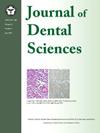The study of three-dimensional smile changes on orofacial morphology
IF 3.4
3区 医学
Q1 DENTISTRY, ORAL SURGERY & MEDICINE
引用次数: 0
Abstract
Background/purpose
Traditionally, two-dimensional (2D) frontal and lateral facial views have provided an incomplete understand true three-dimensional (3D) relationships. This study aimed to investigate the 3D changes in orofacial soft tissues during smiling and to examine the influence of craniofacial and dental morphology on these changes.
Materials and methods
131 individuals aged 18–30 with attractive facial features were recruited. Rest and posed smile 3D facial photos captured by 3D camera and cone-beam computed tomography (CBCT) scans were taken. Data were recorded and analyzed in rest, smile images, and smiling change measurements, including 23 landmarks, 11 linear, and 6 angular measurements. Statistical methods were used to analyze the frequency distribution, the significant difference between rest and smile variables, and the relationship between craniofaciodental tissue and 3D smile changes.
Results
The study involved 65 males (mean age 23.5 ± 3.2 years) and 66 females (mean age 22.5 ± 1.5 years). The soft tissue landmarks changed during smiling reveals that 21 landmarks in z-plane, 22 landmarks in y-plane, and 15 landmarks in x-plane landmarks showed significant differences. In addition, a significant correlation was noted between upper lip length (sn-uli) (r = 0.46, P = 0.057), lower lip length (lls-SB) (r = 0.44, P = 0.022), and the hard tissue measurement Id-Me.
Conclusion
The significant 3D change of soft tissue landmarks during smiling occurs mostly in z and y-plane, rather than x-plane. Clinically, all dimensions should be considered in orthodontic diagnosis and treatment planning, especially in the z plane the change cannot be seen in the traditional 2D analysis.
三维微笑对口腔面部形态变化的研究
传统上,二维(2D)正面和侧面面部视图提供了对真正三维(3D)关系的不完整理解。本研究旨在探讨微笑时口腔面部软组织的三维变化,并探讨颅面和牙齿形态对这些变化的影响。材料与方法招募年龄在18-30岁之间、具有良好面部特征的131人。通过三维相机和锥形束计算机断层扫描(CBCT)拍摄休息和摆姿微笑的三维面部照片。记录和分析休息、微笑图像和微笑变化测量的数据,包括23个地标、11个线性测量和6个角度测量。采用统计学方法分析频率分布、休息变量与微笑变量的显著性差异以及颅面组织与三维微笑变化的关系。结果男性65例(平均23.5±3.2岁),女性66例(平均22.5±1.5岁)。微笑过程中软组织标志的变化表明,z面有21个标志,y面有22个标志,x面有15个标志存在显著差异。此外,上唇长度(sn-uli) (r = 0.46, P = 0.057)、下唇长度(ll - sb) (r = 0.44, P = 0.022)与硬组织测量Id-Me之间存在显著相关。结论微笑时软组织标志的三维变化主要发生在z面和y面,而不是x面。临床上,正畸诊断和治疗计划需要考虑各个维度,特别是在z平面上,传统的二维分析无法看到变化。
本文章由计算机程序翻译,如有差异,请以英文原文为准。
求助全文
约1分钟内获得全文
求助全文
来源期刊

Journal of Dental Sciences
医学-牙科与口腔外科
CiteScore
5.10
自引率
14.30%
发文量
348
审稿时长
6 days
期刊介绍:
he Journal of Dental Sciences (JDS), published quarterly, is the official and open access publication of the Association for Dental Sciences of the Republic of China (ADS-ROC). The precedent journal of the JDS is the Chinese Dental Journal (CDJ) which had already been covered by MEDLINE in 1988. As the CDJ continued to prove its importance in the region, the ADS-ROC decided to move to the international community by publishing an English journal. Hence, the birth of the JDS in 2006. The JDS is indexed in the SCI Expanded since 2008. It is also indexed in Scopus, and EMCare, ScienceDirect, SIIC Data Bases.
The topics covered by the JDS include all fields of basic and clinical dentistry. Some manuscripts focusing on the study of certain endemic diseases such as dental caries and periodontal diseases in particular regions of any country as well as oral pre-cancers, oral cancers, and oral submucous fibrosis related to betel nut chewing habit are also considered for publication. Besides, the JDS also publishes articles about the efficacy of a new treatment modality on oral verrucous hyperplasia or early oral squamous cell carcinoma.
 求助内容:
求助内容: 应助结果提醒方式:
应助结果提醒方式:


